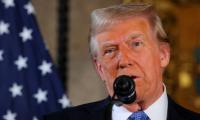International’s list of departments notorious for corruption. This was certainly an achievement especially when fully functional model was not in place yet. The purpose of any revenue organisation is to increase collection and not “to dilute tax culture with discretionary power”. Be as it may, number in above-table providing empirical evidence as to which taxation system is better.
A brief look at reforms will put the whole issue in perspective. In standby arrangement with the international donor, FBR undertook massive reforms in the light of the recommendations of Shahid Hussain Task Force. The purpose of these reforms was to broaden the tax base, create functional model, developing IT system which could be in synch with IT systems of other taxes, minimising interaction between the tax payers and the tax collecting machinery and right sizing of the work-force. Functional models were created in line with these recommendations. Different wings were set up keeping in view the functions assigned to them. Quite a large number of tax offices were established for this purpose. Reasonable systematic arrangements were made.
In the functional model, specialised skills in every segments of administration were to be nourished. Exclusive audit, enforcement, legal wing and tax facilitation centres and IT portals were established in accordance with the best international practices.
It was expected that the person assigned the audit function would develop relevant expertise and prepare sectoral notes. The wing under renowned fiscal economist actually started doing analysis at macro level. Audit manual was developed to keep track of the audit proceedings. This could have helped the auditors identify any industrial unit showing negative profile.
However, with change in management in FBR, such analysis in revenue leakage was put on back burners. Fiscal economist was sent home and replaced with typical bureaucrat. Policy makers and management reverted back to deal with revenue in run-of-the-mill style. It reminds me of an interesting meeting in which the tax theft to the tune of billions of rupees was shown to a senior official, then working at a responsible position. He remarked: “What is the relevance of tax theft with me?” This reflects on the level of understanding of persons at the helm of affairs.
(To be continued)
The writer is former DG Automation FBR Email: shafqqatanand@gmail.com Twitter @Chafqat)
Due to breakdown, power was cut off in Mall Road, Jhikagali, Bhurban, Expressway and other areas
Demonstrators criticise introduction of a token system at the Kuntani border
He says bunkers would be demolished and weapons collected to restore peace to the area
Special Judge Central Shahrukh Arjumand conducts hearing at Adiala Jail on Friday
PN flotilla was led by Commander 14th Destroyer Squadron, Commodore Muhammad Umair
ATC Special Judge Amjad Ali Shah approves her bail until January 13







